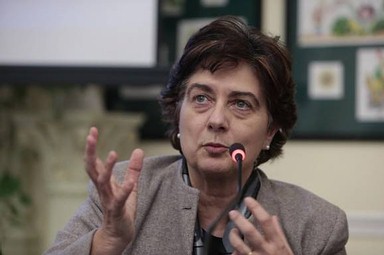Tolstoj. A cry and its answers
Great author and writer, Tolstoy is also known for being one of Russia’s greater thinkers, benchmark for millions of people in his country and all over the worlds.
What is so fascinating about him? What did men like Gandhi, R.M. Rilke, Albert Schweitzer, Pasternak and Giovanni Pascoli found in his work?
In his tormented human journey, in his great literary masterpieces as in his small commercial writings, in his far-reaching educative and social activity, in his religious research through Christianity and other religions, Tolstoy studies the great themes of life and death, of truth and of the «good» human life. He is looking for « a cultured man, a European of our days » who went through the crisis of the modern conscience, through the ideologies of Rationalism and Enlightenment. A man that constantly aches under the temptation of an ideological close mind, of a reduction of Christianity to moral doctrine, of the ultimate denial of the both human and divine nature of Christ. At the same time, he will never be able to suffocate his intuition of the Mystery. At the core of Tolstoy’s personal struggle there are some crucially different options: an idea of a reason that acknowledges the Mystery, or a reason that claims to be the only judge of reality. That is to say, Christianity as an event or a set of rules, an often arrogant and manufactured laicism that goes against laity’s own necessity, which is a Christian experience that finds in itself the motivations for a solid faith.
Opposite to Tolstoy’s racked question – that sometimes reached the edge of blasphemy – there is a Church who do not know that the answer to the wound is to be found in the disarming charm of the evangelic message. In 1901 the now heretic Tolstoy is excommunicated. It is in this moment that Russia rises up against the decree of the Holy Synod. The public opinion sides with the rebellious writer and the Church is accused of « obscurantism ». Tolstoy will die « on the street » on the 20th November 1910, in a train station after a difficult flight from home. He spent his last two day at the doorstep of a monastery. Nor Tolstoy nor the monks ever decided to open the door. He died – at least apparently – without reconciling with the Church.
The tensions of his times that found Tolstoy as their symbol, produced in Vladimir Solovyov the image of the Antichrist, that can only be won when the Christians decide to take the challenge upon themselves. This is the only way to leave the deadly condition of a dim faith and to rediscover the Truth that matches the living Person of Christ.
Tolstoy’s struggle becomes the struggle of an entire nation, of an entire Church. It is also the core of his catharsis. His experience and questions bring to the Russian Church great gifts, from Solovyov’s intuition to an entire generation of martyrs and confessors, first of them Pavel Floranskij.
Curatori: Giovanna Parravicini, Adriano and Marta Dall’Asta, Francesco Braschi, Ol’ga Sedakova, Fekla Tostaja, Italian university students as well as Moscow Economic School.
In collaboration with the Leo Tolstoy State Museum, Moscow; the Russian Literature Institute of the Science Accademy, Saint Petersbourg.





